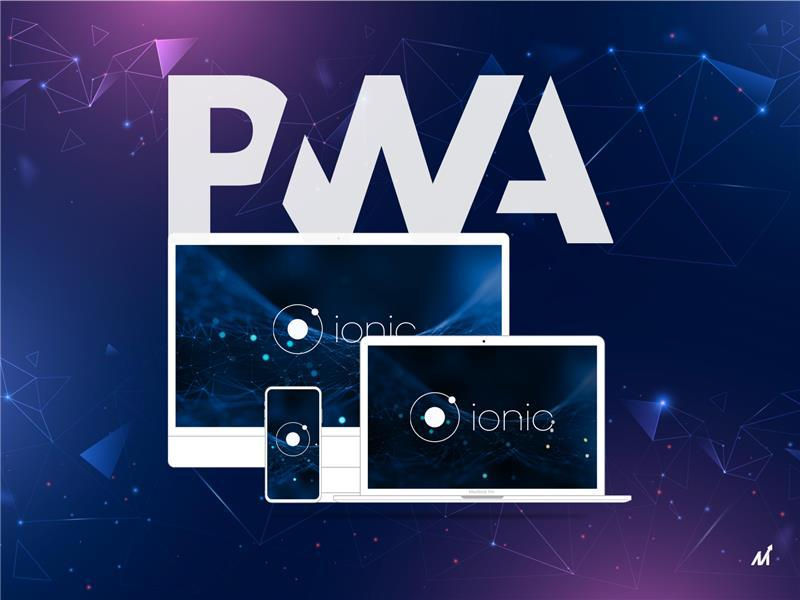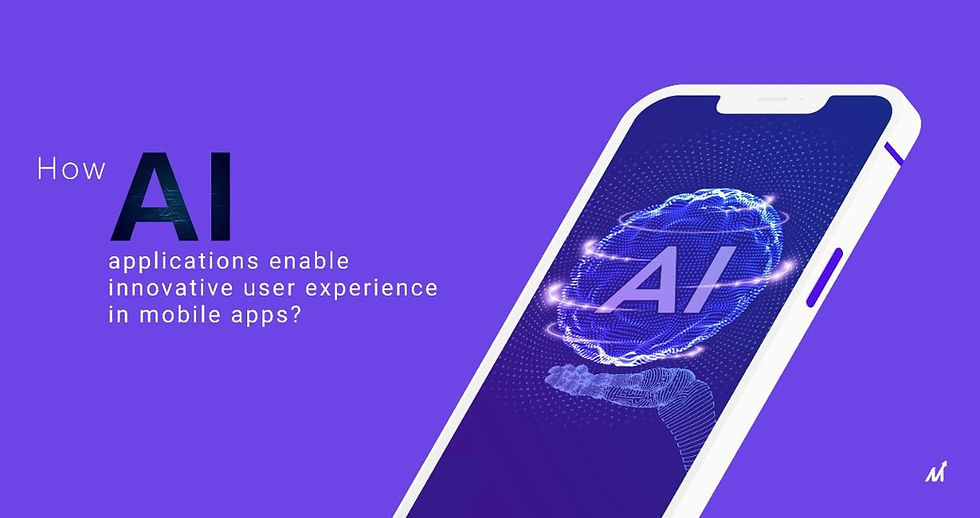How Do You Create The Best HIPAA Compliant Mobile Application?
- amit9154
- Mar 10, 2022
- 7 min read

Apps are improving and expanding the scope of a person's daily life. As the amount of mHealth apps increases and so does the number of HIPAA certified app development companies. HIPAA is at the forefront of your mind when you are planning to develop an app for healthcare that communicates with electronic protected health information (ePHI) like hospitals or the healthcare industry.
Although HIPAA is mostly concerned with the use of medical equipment, the law also contains provisions for other businesses like online pharmacies. Even though the privacy requirements for medical devices aren't included in HIPAA law, developers should not ignore their significance.
App Developers' Checklist for HIPAA Compliant mHealth Apps
It is important to note that the Health Insurance Portability and Accountability Act is noteworthy in that it does not contain a guidelines or recommendations for implementing such things as specific methods of encryption for patient health information. HIPAA is a healthcare app developer's law however is a huge law with many implications.
As I've stated that the law has remained in place since the year 2013. What is the reason it's managed to stay so well-liked for this long? Yes, Ich am trying to make my opinion as inclusive as I can be.
This is the whole thing HIPAA can say on the subject. Can it make your life easier by showing you how to build an HIPAA compatible mobile application? "What is "an emergency?"" "What emergency access procedures should we establish?" "Do I have to provide access to the app for the authorized staff?" "How does this differ from authorized users who access patient data during non-emergencies?" I'm sure this raises many questions.
Let me summarise the most exciting HIPAA guidelines you must follow during the health app creation process, to give you some useful tips:
MINIMIZE THE AMOUNT OF DATA
Be sure to collect information that can improve the efficiency of your app and provide more value for your users. We also recommend against storing PHI in a cache and keeping the geolocation data of users (other other than the state level).
SECURE CONNECTION AND PROTOCOLS ARE USED TO TRANSFER PHI
In addition to encrypting the patient's data and transferring the data via an encrypted HTTPS connection using SSL/TLS to protect it from security breaches. Make sure that your application developers are using these techniques when creating HIPAA compatible software.
INCLUDE AN AUDIT MECHANISM IN THE PROCESS
It should be possible to track who is using the application and the actions they're taking. Audit controls such as these require a unique user identification.
PHI MUST BE REMOVED FROM NOTIFICATIONS AND EMAILS
It is important to keep in mind that PHI is easily hacked by sending push notifications or emails on mobile devices. Text messages and almost all other messaging that isn't app-based, are all in the same category.
ENSURE THE ACCURACY OF YOUR INFORMATION
Modifications to PHI that are not authorized should be impossible. In terms of ensuring the integrity of patient information blockchain technology is valuable. Think about transferring your the EHR (electronic medical records) to a blockchain in order to develop HIPAA secure, hacker-proof software.
What Do HIPAA Compliance Requirements Entail?
HIPAA certified software complies with the requirements of HIPAA, and any other related rules and regulations, changes, or amendments. The general rule is that HIPAA can be both strict (with numerous rules and severe penalties) and vague (with the freedom to choose how to implement these rules).
HIPAA provides five guidelines to be followed by all software developers for healthcare applications:
1. The HIPAA Privacy Rule
The Privacy Rule was formulated to safeguard the use and divulgation of health records as well as any other health-related protected information (PHI). The goal of the rule is to facilitate transfers of medical information more efficient, while also reducing theft and fraud. Patients also have rights over their health information and medical records as per the law, which includes the right to review and request a copy of their records, and request changes to their information.
2. The HIPAA Security Rule
Security Rule Security Rule establishes guidelines for safeguarding ePHI that is generated or received, used, or stored by an entity covered by the Security Rule. The covered entity must take measures to implement "necessary physical, administrative, and technical safeguards to protect the integrity, confidentiality, as well as security" of ePHI in accordance with the Security Rule. While HIPAA does not typically define the exact or minimum standards however, the NIST guideline on HIPAA implementation is often cited.
3. The HIPAA Enforcement Rule
The Enforcement Rule lays out how the Department of Health and Human Services (HHS) will implement HIPAA regulations, with regulators determining the degree of culpability and penalizing non-compliance. A report or breach of data usually results in an investigation, however HHS has the power to investigate without cause. Department of Health and Human Services is able to investigate without cause.
4. The Breach Notification Rule
The Breach Notification Rule is a requirement for HIPAA covered entities as well as the business associates of them to inform HIPAA covered entities as well as their business partners of any unsecured PHI breach, which includes both electronic and paper-based PHI. The nature and the extent of the PHI involved, the nature of disclosure, the extent to which the data was accessed and the the risk of exposure are all aspects that HHS examines when deciding what is considered a breach. Notifications of breaches that affect more than 500 individuals must be announced via media along with other methods.
5. The Omnibus Rule
The most recent HIPAA amendment known as The Omnibus Rule, was amended in 2013 and modifies a number of HIPAA Privacy Security, Enforcement, and Privacy Rules. It is said that the Omnibus Rule is stricter, making it harder to avoid breach notifications, extending the liability for non-compliance to business affiliates, and setting new privacy restrictions on PHI use.
How to Create a HIPAA Compliant Mobile Application
HIPAA safeguards health information by requiring that healthcare apps comply with certain minimum data security standards throughout their development. These guidelines should be adhered to by any mobile application for healthcare developing company that needs to launch the app. This controlled activity protects the privacy of a patient's important health information.
In the event of a data breach each user's personal information poses the risk of health and safety. HIPAA obliges businesses to follow the following guidelines:
1. Communications
Check that your website or app includes an emergency contact-to-action feature that lets users contact you in the event of an emergency, even when they aren't connected to their telephone. Be sure that any content created by users you publish on your site is uploaded automatically to your application. The user doesn't have to be able to comprehend or interact with the content in order to upload it.
Check that your application can upload and download data without compromising the integrity or security the data. It's important to ensure that your application only makes use of HTTPS to connect to the server and connect to secure HTTP resources. Access to hidden media is not possible without explicit user consent. The ability to hide any media - images or videos that is linked explicitly to the full consent of the user and could be considered to be an EOI.
2. Migrations
The most significant and first HIPAA danger is moving the current website platform to a private company. The risk is significantly increased if the healthcare professional uses an online platform developed by a third-party vendor like Manta, Joomla, or WordPress that the doctor is still using.
Think about the possibility that your doctor already uses or is creating applications. If so, think about the possibilities of designing an application and conduct an in-person meeting with the doctor to find out more about how it can help them. You might have access to this kind of information as part of your HIPAA compliance process, based on the software the doctor is currently using.
3. Identify App Packages and Maximum Insertions
The first step is to determine the app's primary function is, or the amount of information the developer will give. It can be analyzed by the function of the app for example, if it's an essential contact lab or a therapeutic solution for corporate clients.
An in-depth examination of the app's size suggests the possibility of security issues with data. Health outsourcing or outsourcing apps developers make sure that all technical requirements are met throughout the process of development. In the event that they fail, the app's life time frame will be extended. Additionally, there should be no bulk data that is unnecessary Some modern apps could contain 5 to 10 times more or even the minimum information.
4. Evidentiary Considerations
A HIPAA application's primary goal is to assist you in running an efficient health routine. Therefore, every aspect of the app's operation should be based on the idea of safety. The data must be collected prior to the app are able to be used. The software that underpins it should be able to store data feeds from sources online.
If data is sourced from third-party sources of data, it should not be kept in a way that creates gaps in time, for example one week. In addition, encryption should be given priority because HIPAA does not require the use of encryption technology in applications. This means that encryption technologies should be protected, secure, as well as accessible via a central place.
5. Evaluate the Root CA
It is also essential to examine the development team's infrastructure in order to keep this crucial security measure. For instance, there may be a shady connection to the owner of the app or even a single individual might set up a fake server to store important data.
It is advisable to discuss this with the team working on development. Implementing security solutions for business that can help prevent unauthorised access to data stored on AWS will help decrease the possibility of unauthorised third parties creating a fake CA infrastructure to store healthcare information.
6. Data Storage
The most crucial aspects is the sensitive data that is stored inside the application. Wireless setups, blocked ports or even handwritten app content do not shield sensitive information from being accessed by unauthorized persons. The sensitive information must be kept in a safe central location that has an option to failover.
FAQs
1. What is HIPAA's Protected Health Information (PHI)?
PHI is any type of patient information or data regarding a patient that could be used to identify them, like their address, name or date of birth, devices identifiers, SSNs, biometrics, email addresses, images or lab findings medical history, as well as payment data. The health data that is stored electronically is known as electronic health information.
2. Under HIPAA, who are Business Associates?
Anyone or any organization that is involved in the work of an entity covered by PHI that requires using (keeping or transmitting) of personal health information is known as an associate of business.
Conclusion
We are fast approaching the time when digital health transformation will become the norm, due to the impact of the coronavirus outbreak on the health sector. This suggests that in the near future, there will be a significant shift to compliance and adherence. Healthcare digital transformationists who are able to master the complexity of compliance and integrate these into their medical software in the present will be the most successful.
Markovate's team of experienced Designers and Developers can help you brainstorm, design and develop your next revolutionary idea If you're looking for an expert technical partner to assist you in establishing your healthcare business as well as your internal products.







Comments